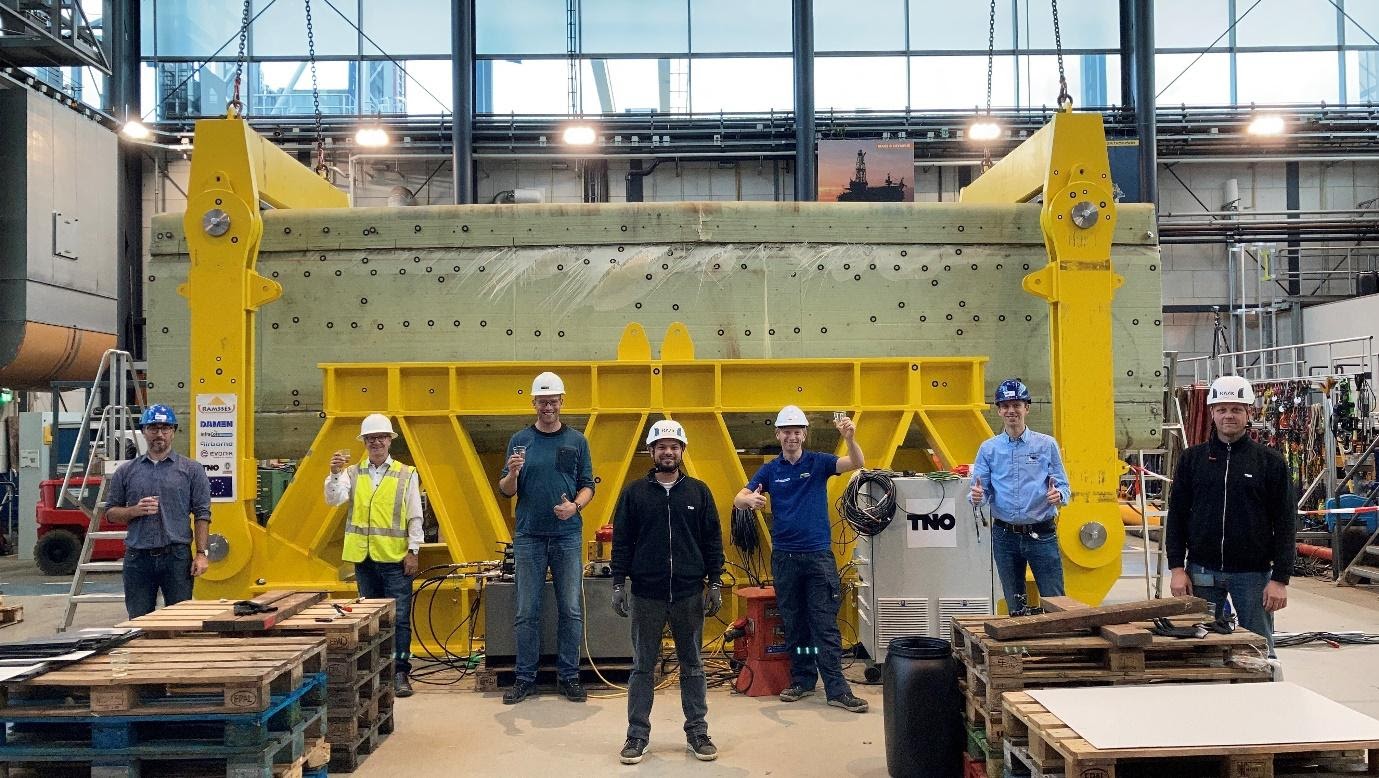A dedicated team of TNO experts have concluded a series of large-scale tests on a representative composite ship structure. The spectacular ultimate test reached a load of 800 tonnes, which is almost twice the design load.
This composite box, made of 1:1 scale panels and bulkheads with actual joint geometries, measures 2x2x8 metres. The box was tested in 4-point bending, in a specially designed test rig. The test performed by TNO Structural Dynamics was witnessed by all involved RAMSSES project partners: DSNS Vlissingen, Damen Gorinchem, Infracore, Airborne UK, Bureau Veritas, and Evonik.
Structural testing
This large structural testing is a crucial part of the development for scaling up the composite technology and capability to design, produce and market complete composite vessels up to 85 metres in length that comply with SOLAS and class regulations.
To test the box, a dedicated 30-tonne steel test frame has been designed by TNO Structural Dynamics and built by DSNS Vlissingen. Four hydraulic cylinders supplied the required load. Multiple cameras and a Digital Image Correlation setup were used to accurately track the deformation during testing.
Weight reduction
The composite box consists of 4 sandwich panels made by resin infusion: two panels manufactured by Airborne UK and two panels manufactured by Infracore using their patented technology. The total box assembly of panels and bulkheads is achieved by adhesive bonding with Scigrip 300 adhesive.
The total weight of the box is 10 metric tonnes. Even so, the composite technology offers approximately forty per cent weight reduction in comparison to a steel ship structure. This will allow a reduction of fuel consumption and CO2 emission to enable more sustainable waterborne transport.
Picture: Celebrating the successful ultimate test on the composite box after reaching twice the design load.








